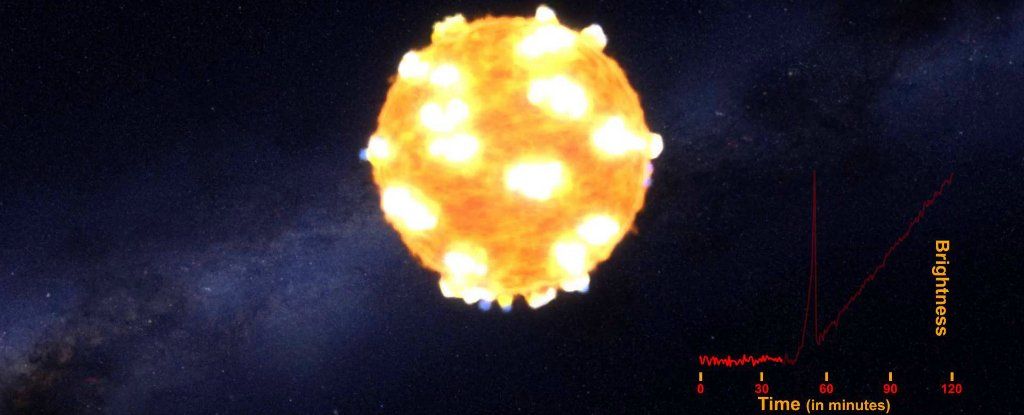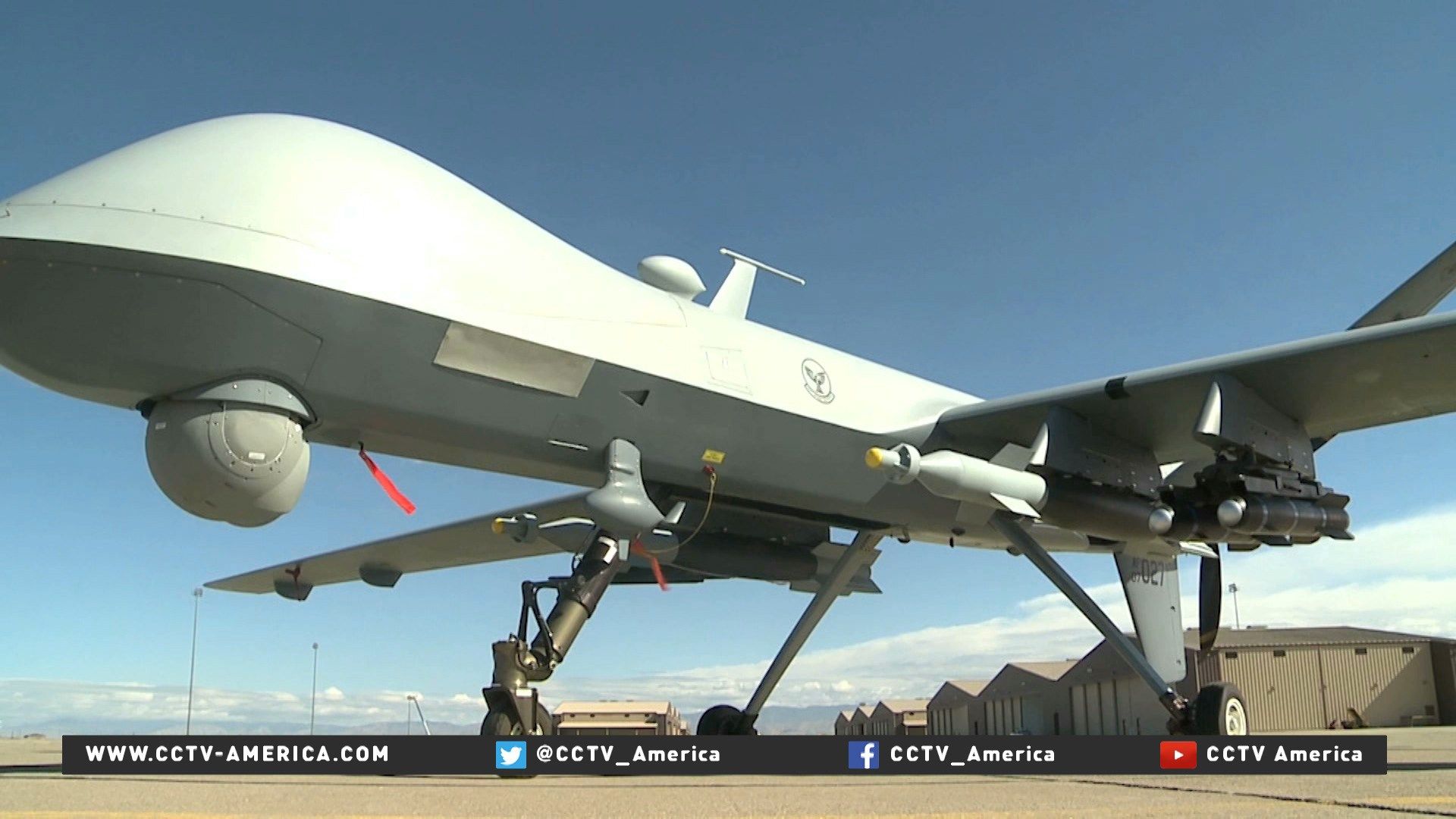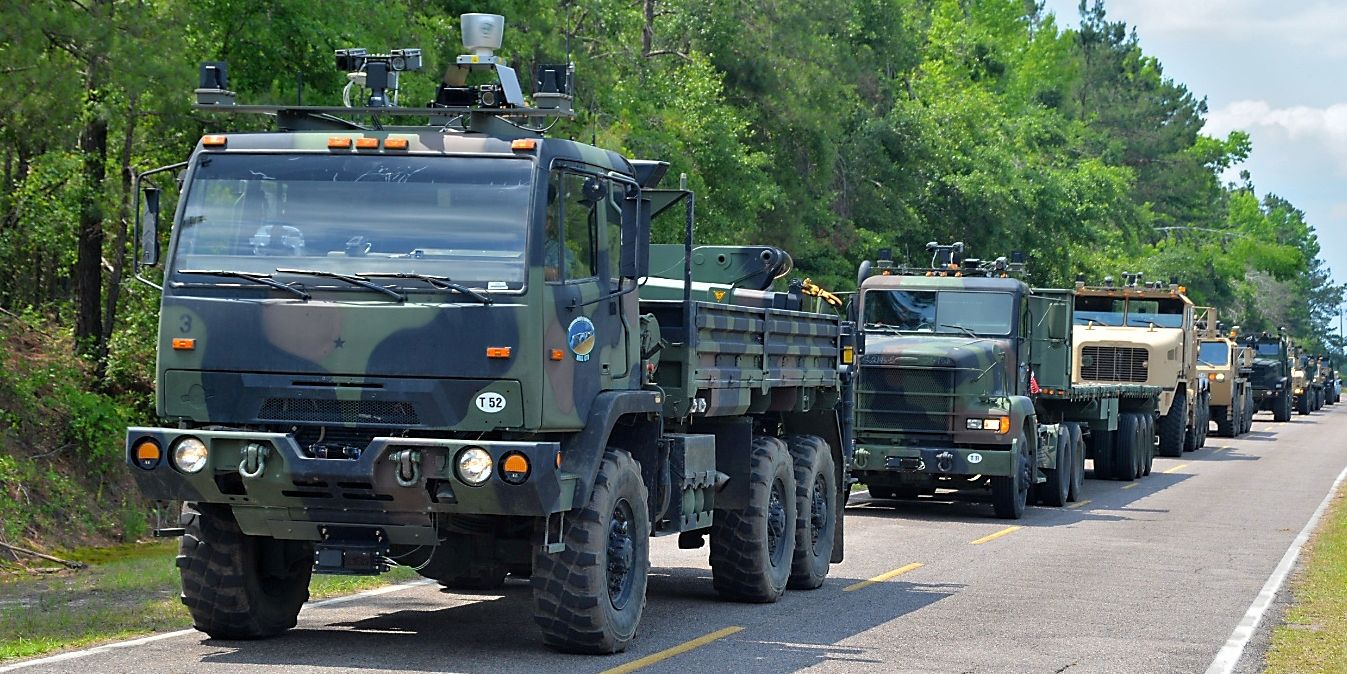Lawrence Livermore National Laboratory says collaboration project with IBM “could change how we do science”.


For info about divesting from nuclear weapons companies, go to http://responsibleinvest.org/
Thanks to the Future of Life Institute for helping support this video http://www.futureoflife.org (in particular, thanks to Max Tegmark for guest narrating and Meia Chita-Tegmark for her feedback)
And thanks to everyone who supports MinutePhysics on Patreon! http://www.patreon.com/minutephysics
Link to Patreon supporters here: http://www.minutephysics.com/supporters.html
Music by Nathaniel Schroeder, http://www.soundcloud.com/drschroeder
References

DARPA’s new “Spectrum Collaboration Challenge” with a $2million prize for who can motivate a machine learning approach to dynamically sharing the RF Spectrum.
WASHINGTON, March 28, 2016 /PRNewswire-iReach/ — On March 23rd, 2016 DARPA announced its next Grand Challenge at the International Wireless Conference Expo in Las Vegas, Nevada. Program Manager, Paul Tilghman of DARPA’s Microsystems Technology Office (MTO), made the announcement to industry leaders following the conferences Dynamic Spectrum Sharing Summit. The challenge will motivate a machine learning approach to dynamically sharing the RF Spectrum and has been named the “Spectrum Collaboration Challenge.” A top prize of $2million dollars has been announced.
While mostly transparent to the typical cell phone or Wi-Fi user, the problem of spectrum congestion has been a long standing issue for both the commercial sector and Department of Defense. The insatiable appetite for wireless connectivity over the last 30 years has grown at such a hurried pace that within the RF community the term spectrum scarcity has been coined. RF bandwidth, the number of frequencies available to communicate information over, is a relatively fixed resource, and advanced communication systems like LTE and military communications systems consume a lot of it. As spectrum planners prepare for the next big wave of connected devices, dubbed the Internet of Things, they wonder where they will find the spectrum bandwidth they need to support these billions of new devices. Equally challenging, is the military’s desire to connect every soldier on the battlefield, while using these very same frequencies.
DARPA has chosen Barone Consulting to help develop the Spectrum Collaboration Challenge to address these critical infrastructure and military operation needs. In the tradition of other DARPA Grand Challenges, the Spectrum Collaboration Challenge provides an opportunity for experts across a wide variety of disciplines to devise groundbreaking strategies and systems and compete in open competition to win prizes, while advancing the state-of-the-art and seeding new technology communities. For the Spectrum Collaboration Challenge, the tasks are to combine distributed sensing techniques, innovative RF transmit and receive technologies, and cutting edge machine learning algorithms to create radio networks capable of learning to collaborate with other unknown radio networks, in real time.
Hypersonic technology vehicles could revolutionize the way that we get around the globe. Research and testing is currently being carried out by several companies.
There are several hypersonic crafts under development, and they could greatly alter the way that we travel. Indeed, many of these designs have already provided valuable insights into how we can quickly and efficiently get from one side of the globe to the other.
For example, the Falcon Hypersonic Technology Vehicle 2 (HTV-2) is a prototype for an unmanned military aircraft, and the DARPA team behind the tech claims that it is the fastest ever built. According to Lockheed-Martin, the speeds that this craft was designed for are remarkable. They assert that, “at HTV-2 speeds, flight time between New York City and Los Angeles would be less than 12 minutes.”

Astronomers have for the first time seen a shockwave generated by a star’s collapsing core and captured the earliest minutes of two exploding stars.
An international team of scientists found a shockwave only in the smaller supernova, a finding that will help them understand these complex explosions which create many of the elements that make up humans, the Earth and the Solar System.
“It’s like the shockwave from a nuclear bomb, only much bigger, and no one gets hurt,” says Brad Tucker from the Australian National University (ANU).

Hmmm; could I set up a subcontracting firm full of top gun gamers/ pilots working with the US DoD? We see privatized Army, etc. And, with drones it’s more about the skills of a gamer meets military strategy as a former pilot. Maybe some possibility with the right funding and clearance checks in place on drone pilots.
But in many ways this is not like most other aircraft. The MQ-9 Reaper is the U.S. Air Force’s most advanced drone or “remotely piloted aircraft” in use today.

At least in public relations terms, transhumanism is a house divided against itself. On the one hand, there are the ingenious efforts of Zoltan Istvan – in the guise of an ongoing US presidential bid — to promote an upbeat image of the movement by focusing on human life extension and other tech-based forms of empowerment that might appeal to ordinary voters. On the other hand, there is transhumanism’s image in the ‘serious’ mainstream media, which is currently dominated by Nick Bostrom’s warnings of a superintelligence-based apocalypse. The smart machines will eat not only our jobs but eat us as well, if we don’t introduce enough security measures.
Of course, as a founder of contemporary transhumanism, Bostrom does not wish to stop artificial intelligence research, and he ultimately believes that we can prevent worst case scenarios if we act now. Thus, we see a growing trade in the management of ‘existential risks’, which focusses on how we might prevent if not predict any such tech-based species-annihilating prospects. Nevertheless, this turn of events has made some observers reasonably wonder whether indeed it might not be better simply to put a halt to artificial intelligence research altogether. As a result, the precautionary principle, previously invoked in the context of environmental and health policy, has been given a new lease on life as generalized world-view.
The idea of ‘existential risk’ capitalizes on the prospect of a very unlikely event that, were it to pass, would be extremely catastrophic for the human condition. Thus, the high value of the outcome psychologically counterbalances its low probability. It’s a bit like Pascal’s wager, whereby the potentially negative consequences of you not believing in God – to wit, eternal damnation — rationally compels you to believe in God, despite your instinctive doubts about the deity’s existence.
However, this line of reasoning underestimates both the weakness and the strength of human intelligence. On the one hand, we’re not so powerful as to create a ‘weapon of mass destruction’, however defined, that could annihilate all of humanity; on the other, we’re not so weak as to be unable to recover from whatever errors of design or judgement that might be committed in the normal advance of science and technology in the human life-world. I make this point not to counsel complacency but to question whether ‘existential risk’ is really the high concept that it is cracked up to be. I don’t believe it is.
In fact, we would do better to revisit the signature Cold War way of thinking about these matters, which the RAND Corporation strategist Herman Kahn dubbed ‘thinking the unthinkable’. What he had in mind was the aftermath of a thermonuclear war in which, say, 25–50% of the world’s population is wiped out over a relatively short period of time. How do we rebuild humanity under those circumstances? This is not so different from ‘the worst case scenarios’ proposed nowadays, even under conditions of severe global warming. Kahn’s point was that we need now to come up with the relevant new technologies that would be necessary the day after Doomsday. Moreover, such a strategy was likely to be politically more tractable than trying actively to prevent Doomsday, say, through unilateral nuclear disarmament.
And indeed, we did largely follow Kahn’s advice. And precisely because Doomsday never happened, we ended up in peacetime with the riches that we have come to associate with Silicon Valley, a major beneficiary of the US federal largesse during the Cold War. The internet was developed as a distributed communication network in case the more centralized telephone system were taken down during a nuclear attack. This sort of ‘ahead of the curve’ thinking is characteristic of military-based innovation generally. Warfare focuses minds on what’s dispensable and what’s necessary to preserve – and indeed, how to enhance that which is necessary to preserve. It is truly a context in which we can say that ‘necessity is the mother of invention’. Once again, and most importantly, we win even – and especially – if Doomsday never happens.
An interesting economic precedent for this general line of thought, which I have associated with transhumanism’s ‘proactionary principle’, is what the mid-twentieth century Harvard economic historian Alexander Gerschenkron called ‘the relative advantage of backwardness’. The basic idea is that each successive nation can industrialise more quickly by learning from its predecessors without having to follow in their footsteps. The ‘learning’ amounts to innovating more efficient means of achieving and often surpassing the predecessors’ level of development. The post-catastrophic humanity would be in a similar position to benefit from this sense of ‘backwardness’ on a global scale vis-à-vis the pre-catastrophic humanity.
Doomsday scenarios invariably invite discussions of our species’ ‘resilience’ and ‘adaptability’, but these terms are far from clear. I prefer to start with a distinction drawn in cognitive archaeology between ‘reliable’ and ‘maintainable’ artefacts. Reliable artefacts tend to be ‘overdesigned’, which is to say, they can handle all the anticipated forms of stress, but most of those never happen. Maintainable artefacts tend to be ‘underdesigned’, which means that they make it easy for the user to make replacements when disasters strike, which are assumed to be unpredictable.
In a sense, ‘resilience’ and ‘adaptability’ could be identified with either position, but the Cold War’s proactionary approach to Doomsday suggests that the latter would be preferable. In other words, we want a society that is not so dependent on the likely scenarios – including the likely negative ones — that we couldn’t cope in case a very unlikely, very negative scenario comes to pass. Recalling US Defence Secretary Donald Rumsfeld’s game-theoretic formulation, we need to address the ‘unknown unknowns’, not merely the ‘known unknowns’. Good candidates for the relevant ‘unknown unknowns’ are the interaction effects of relatively independent research and societal trends, which while benign in themselves may produce malign consequences — call them ‘emergent’, if you wish.
It is now time for social scientists to present both expert and lay subjects with such emergent scenarios and ask them to pinpoint their ‘negativity’: What would be potentially lost in the various scenarios which would be vital to sustain the ‘human condition’, however defined? The answers would provide the basis for future innovation policy – namely, to recover if not strengthen these vital features in a new guise. Even if the resulting innovations prove unnecessary in the sense that the Doomsday scenarios don’t come to pass, nevertheless they will make our normal lives better – as has been the long-term effect of the Cold War.
References
Bleed, P. (1986). ‘The optimal design of hunting weapons: Maintainability or reliability?’ American Antiquity 51: 737– 47.
Bostrom, N. (2014). Superintelligence. Oxford: Oxford University Press.
Fuller, S. and Lipinska, V. (2014). The Proactionary Imperative. London: Palgrave (pp. 35–36).
Gerschenkron, A. (1962). Economic Backwardness in Historical Perspective. Cambridge MA: Harvard University Press.
Kahn, H. (1960). On Thermonuclear War. Princeton: Princeton University Press.

The fast-food retailer built the droid with Australian startup Marathon Robotics using a robot sourced from the military and its own technology, including Domino’s GPS tracking data.
DRU, which could spell the beginning of the end of the pizza delivery boy, has a sensory system that uses lasers to move around obstacles in its path to travel unassisted to a customer’s address.
The four-wheeled robotic unit travels up to speeds of 20km/h and is designed to cruise on footpaths, trails and bike paths.
Cute, but i think mainly a publicity stunt. You couldnt trust that thing to be by itself unless it was a really safe small town or nice suburb.
For a pizza chain, Domino’s actually has a pretty rich history of innovation. It’s embraced social media, created a one-click Easy Order button and even built a delivery car that has its own pizza oven. Now it’s looking at robots. More specifically: delivery robots. What you see here is DRU (Domino’s Robotic Unit), an autonomous delivery vehicle built in collaboration with Australian technology startup Marathon Targets that Domino’s says is the first of its kind. It’s filled with thousands of dollars worth of military robotics tech, but its covert mission has been to deliver fresh pizza to the residents of Queensland.
DRU is still in the prototype stage, but that doesn’t mean that it hasn’t been busy. Domino’s worked with the Queensland Department of Transport and Main Roads to ensure it met all the requirements to be set loose on the streets. It uses LIDAR, the same technology utilized by self-driving cars, to identify the surrounding environment and has built-in GPS tracking technology that syncs with Google Maps. It’s actually very similar to Starship Technologies’ eponymous delivery robots, which will soon hit the streets of London.